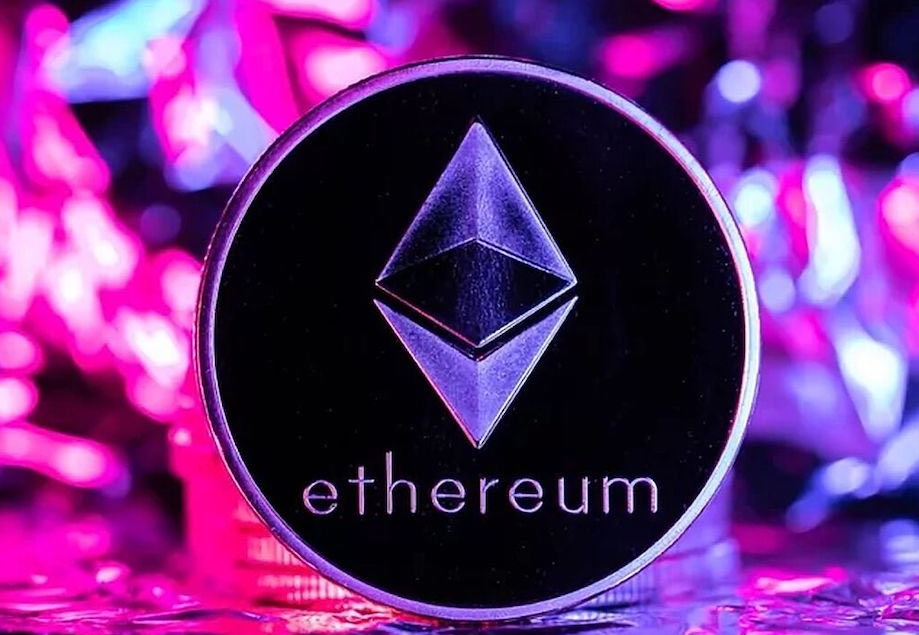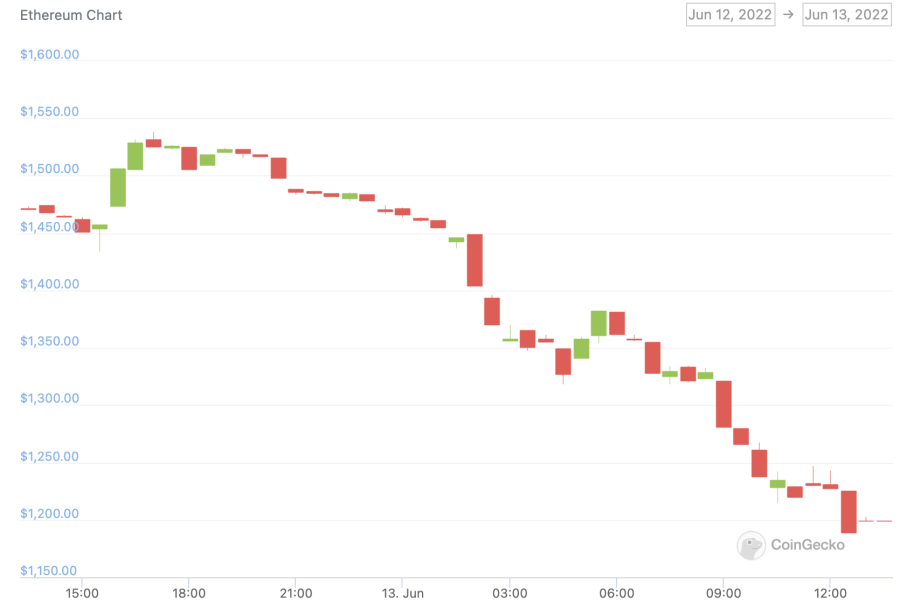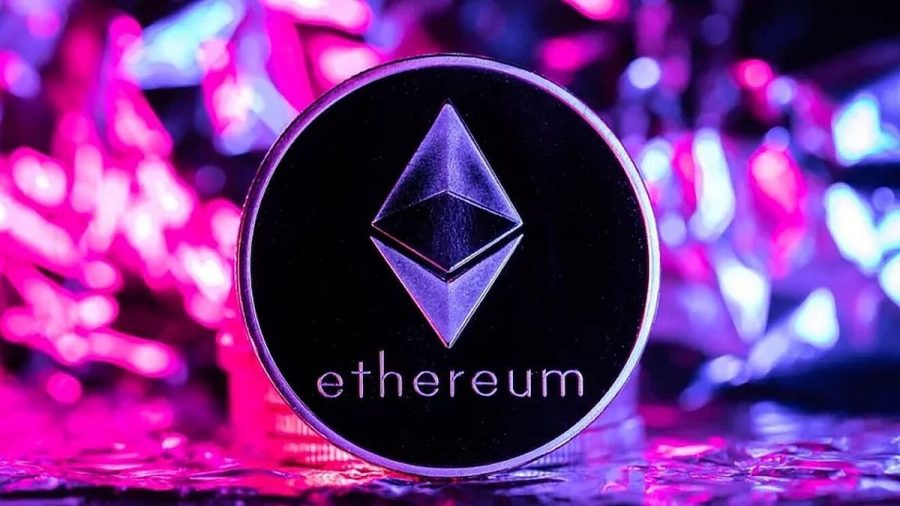
The Ethereum price is crashing – we spoke to two crypto founders who think the premier smart contract platform has a lot further to fall… before it rises again to even loftier heights.
Brothers Oscar and Barney Chambers, the founders of the Umbria Network, think the Merge – Ethereum’s migration from Proof of Work to a cheaper and faster to run Proof of Stake system – won’t happen in August and will be subject to further delays.
When it does go live, they believe it will be underwhelming and have unintended consequences. All told, none of this will be good for the price of Ethereum, which could easily trade as low as $600 according to the founders.
With ETH currently trading at $1,221, compared to circa $1,800 when Business2Community conducted the interview with the founders last week, that looks like an increasingly astute judgement.
A general crash in valuations across the crypto complex continues today after being given new impetus following shock US inflation data (should we be shocked anymore?) that indicated that price rises were not showing signs of peaking anytime soon.
Cryptoassets are a highly volatile unregulated investment product.
That led to sustained selling of crypto going into the weekend, with crypto doubly vulnerable not just because it trades like an ultra high-risk tech stock but also because it trades at weekends.
However, Ethereum had seemed to have hit on some good news flow last week with the Merge on the Ropsten testnet deemed a success, but that sentiment was soon reversed.
Turns out it wasn’t such a success after all, with a plethora of bugs and issues having since come to light. A critical precursor to the eventual roll out of the Merge, the difficulty bomb that would make it more expensive to mine, has been delayed (again).
The upshot is we can forget about an August date for the Merge going live. If you are interested in the details check out the Ethereum Core Devs meeting which took place on 10th June.
This news came to light after we had interviewed the founders of the Umbria Network, a bridging solution that operates on half a dozen protocols including Polygon, the popular Layer 2 solution for Ethereum (the second part of this interview looking at Umbria’s Narnia bridge and its growing success as an interoperability solution will be published tomorrow).
In an important win, Umbria has just been brought onto the Polygon Accelerator in a vote of confidence in its novel approach to bridging.
Umbria’s system dispenses with the need for a multitude of wrapped asset deposits, validators and mint/burn mechanisms, in favour of a more secure, faster and cheaper liquidity pool approach.
In an aside, one similar synthetic product – stETH – (staked ETH), which is issued as an IOU for ETH that is staked as part of the pre-Merge process, is being blamed for the acute nature of the problems at crypto lender Celsius. Celsius yesterday shuttered all withdrawals.
Oscar Chambers says Layer 2s aren’t going anywhere. Indeed he thinks the opposite is the case.
“If you normalize the graph to allow for the fact that crypto is more bearish, as a ratio Layer 2 is increasing in interest. So crypto in general is going down but Layer 2 is going up.
“So our bridge is being pulled up by that, but also being dragged down at the same time by the fact that people are losing a little bit of interest in crypto, for now, until the next run, which we think will come in the next two years or so,” says Oscar.
In one sign of the strength of the Polygon product offering, projects that were previously committed to terra have started migrating to Polygon, as we reported recently.
Barney Chambers chips in by describing himself as a pessimist regarding Eth 2.0 (another monicker for the Merge process). “I remember in 2018 when they work talking about sharding on Ethereum and how they were going to move Ethereum to proof of stake, but we haven’t really seen any concrete deployment of anything that isn’t purely a preparation for something that might come in the future.
“And even if Eth 2.0 was a wild success with its implementation and it was deployed correctly and it all went really well, it would still be two orders of magnitude slower than some of the current solutions we have, on Polygon for example, and Solana.
“So I don’t really see Eth2.o being an issue for the [our] bridge.
“Another reason it won’t be an issue is Moore’s Law. Me and Oscar believe that essentially as the throughput of blockchain transactions increases, people are going to start developing software for blockchains that requires this extra throughput and we’re just going to see another bottleneck, which will be an order of magnitude faster than the ones we have right now.
“On Ethereum you might only be able to do 15 tps or whatever it might be. If that was 150 tps, people would just make projects that require the 150 tps instead of 15.
So I still think that all of these layer 2 blockchains are definitely going to be needed in the future and we might even potentially see Layer 3 blockchains, or Layer 4, which look at the Layer 2 stuff we have right now and spin that up into a hash and put that onto a corresponding blockchain.”
Oscar picks up the baton: “People always optimise what the technology can do.
“There was an NFT project similar to Farmville that came onto Polygon and so many people were using it and it required so many transactions per second that Polygon had to reinvent how they were accepting transactions onto the Polygon network.
“They raised the minimum gas price that you would have to pay, thereby increasing the expense of using their network.
“That was all just because people said ‘hey we can get away with doing this may transactions, we can create this robust features, this interesting feature, let’s deploy that now’; people started using it and the technology had to scale up.”
Cryptoassets are a highly volatile unregulated investment product.
Oscar: “They set a deadline and then another. We’ve seen a few crypto projects do that. I don’t think it is deliberate but I think it is an unexpected consequence of how fast this space moves.
“You think of a solution that would be great to have today but next year the technology has moved on and you don’t actually need that solution anymore.
“A crypto that has really suffered from that is Cardano. They keep producing all of these whitepapers and creating all of these solutions, and buy the time they’ve conducted the rigorous approach and really locked these systems and protocols down, they are completely obsolete and they have to move on and create the next one.
“Eth 2.0 has entered that realm. It is an obsolete technology that has already been surpassed by all of these Layer 2s. I don’t think we need Eth 2.0 to do anything that Layer 2s can’t already do.
“And as we move forward in time, the technology in the space is just going to move further and further away from the proposal and the hope of Eth 2.0.”
For more information on how and where to buy Polygon read our guide.
Barney adds: “The risk for developing something new and completely different is so high. It is also such a big project in terms of complexity in the code base and how many people have been developing on it.
“It is not the simple anymore to redefine a whole bunch of the protocol elements compared to a new project that might only have been out for 12 months.
“There are so many unintended consequences that may arise from this Merge, that from a technical perspective it is very difficult to know what they are doing.
Oscar: “I definitely think we are going to see $600 Ethereum in the next 12 months.
“Basically the same thing that happened in 2019 and 2015, 2014, -–I think there is definitely a strong correlation between the halvening in Bitcoin and a bull run that then happens. But I think that correlation is going to be weaker this time than it was last time.
“Bitcoin really hasn’t been the main currency in the limelight compared to the last two bull runs. I think Ethereum has really developed as a platform that people know and love, with a lot of infrastructure for other projects; so I do think we are going to be in a winter for a couple of years.
“I don’t think it is going to be quite as intense as the last one because of the infrastructure we now have in place – all of these amazing projects in particular Ethereum based projects.
Barney: “The Merge definitely will happen but way later than everyone expects and it will be a lot more underwhelming than everyone expects. There is also the chance that it will completely blow up Ethereum.
“One of the things that may not be fully considered by the Ethereum guys right now is that the price of Ethereum is directly correlated to the gas price of Ethereum for transactions.
“When we see crazy gas prices we tend to see Ethereum go up in value. If it suddenly becomes very cheap to transact in Ethereum, that actual might make the value of the underlying asset worth less – that’s because people don’t need to buy it as much to transact on Ethereum.”
Oscar: “A secondary consequence of that might be that now that is cheaper to transact on Ethereum, people start doing more transactions on Ethereum and the gas price starts to go back up again.
“So maybe there will be a period of volatility while all those different factors compete with each other and then reach a steady state.”
The Umbria founders think Ethereum could surpass or even double the all-time high it reached at the height of last year’s bull run, where it printed an all-time high of $4,700.
For the second part of this interview check back on Business2Community tomorrow. Join our Telegram crypto news group to keep abreast of the last news and exclusive interviews and analysis from b2c.
Next 10x Crypto – Lucky Block (LBLOCK)
Our Rating
This article was written for Business 2 Community by Gary McFarlane.
Learn how to publish your content on B2C
Gary is the editor of business2community.com. He is also the former cryptocurrency analyst at interactive investor, the UK’s second-largest investment platform. He has been active in the digital asset space since 2013, when he initiated coverage of bitcoin at respected investment monthly magazine Money Observer.… View full profile ›
Join over 100,000 of your peers and receive our weekly newsletter which features the top trends, news and expert analysis to help keep you ahead of the curve
by Personal Branding Blog
by Ali Raza
by Mary Lister
by Shane Jones
by Matt Williams
by James Scherer
by Ayo Oyedotun
by Ayo Oyedotun
document.getElementById( “ak_js_1” ).setAttribute( “value”, ( new Date() ).getTime() );
Thanks for adding to the conversation!
Our comments are moderated. Your comment may not appear immediately.
Note that the content on this site should not be considered investment advice. Investing is speculative. When investing your capital is at risk. This website is free for you to use but we may receive commission from the companies we feature on this site.



